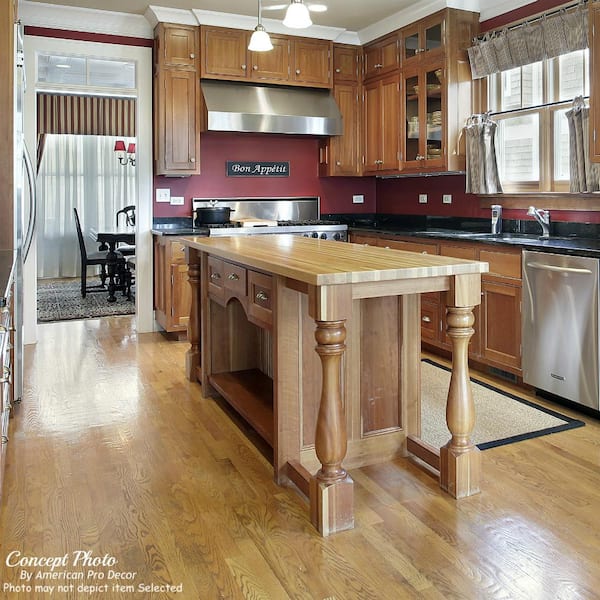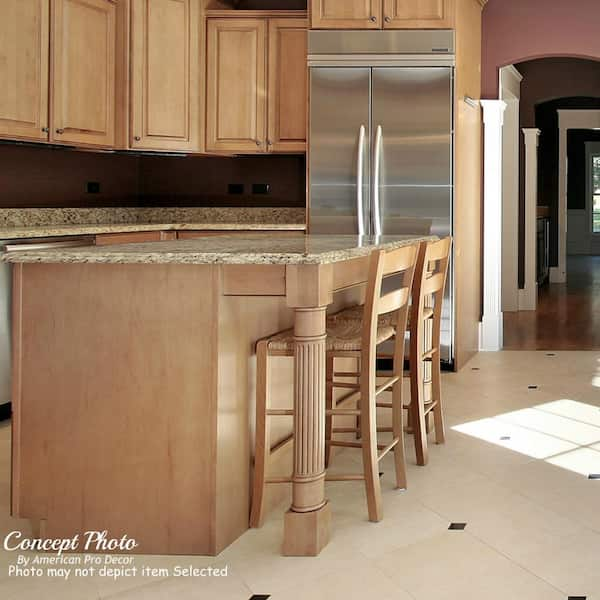Elegant Kitchen Island Legs: Raise Your Kitchen Design
Crucial Tips for Picking the Perfect Table for Your Cooking Area
Selecting the ideal table for your cooking area is greater than simply an issue of preference; it demands a detailed understanding of your space and needs. Begin by gauging your offered room to guarantee ample clearance for motion. The shape of the table plays an essential function; while rectangular tables match bigger areas, round ones foster affection, and extendable options provide versatility. Product selection is just as critical, with hardwoods giving toughness and glass loaning a contemporary touch. Finally, the table needs to harmonize with your kitchen area's visual appeals and accommodate your family conveniently. What various other aspects might affect this essential choice?
Measure Your Space
Picking the perfect eating table starts with a meticulous analysis of your offered area. This foundational action guarantees that the table not just fits conveniently within the space yet also matches the general layout and capability of your eating area.
It is important to leave sufficient space for chairs to be pulled out and for people to move around the table without blockage. A general rule of thumb is to permit at the very least 36 inches of clearance from the side of the table to the closest wall or item of furnishings.
Additionally, think about the variety of individuals you commonly entertain and whether you require added area for visitors. Choosing an extendable table can offer flexibility, allowing you to fit varying numbers of diners. By precisely measuring your room, you prepared for selecting a table that improves both the aesthetics and functionality of your eating area.
Select the Right Forming

On the other hand, round tables are excellent for smaller kitchens or intimate events, as they promote conversation by permitting everyone to encounter each other. They also give a sense of coziness and can fit well in tighter rooms as a result of their lack of sharp edges. Oval tables use the best of both worlds, incorporating the size of rectangular tables with the intimacy of round ones, making them functional for various settings.
Square tables are one more alternative, particularly suited for square-shaped rooms. They create a in proportion and contemporary look, fostering an equal dining experience for all seated. Nonetheless, they may be much less practical for larger events unless they include extensions. Ultimately, the shape you select need to straighten with your room dimensions and lifestyle to guarantee both type and function.
Material Considerations
When selecting an eating table, product factors to consider are paramount in figuring out the table's sturdiness, maintenance requirements, and general aesthetic. Wood is a classic selection, supplying classic allure and effectiveness. Woods like mahogany, walnut, and oak are particularly sturdy, though they can be pricey. kitchen island legs. Softwoods, such as want, are much more economical yet might be vulnerable to damages and scratches.
Glass-topped tables offer a contemporary, streamlined appearance and can make a space appear bigger as a result of their transparency. They require regular cleaning to protect against smudges and finger prints. In addition, solidified glass is advised for its extra stamina and safety and security.

Lastly, composite materials like MDF (Medium-Density Fiberboard) or plywood are economical options. These materials can resemble the appearance of solid wood but might not provide the same long life. They are typically simpler to tidy however can be prone to water damage otherwise correctly secured.
Eventually, the choice of product ought to line up with your kitchen's design, your lifestyle requires, and your budget restraints. (kitchen island legs)
Seating Capacity and Convenience
How do you establish the ideal seating ability and comfort for your table? This crucial action entails examining both the physical space readily available in your kitchen and your house's functional demands. Begin by measuring your kitchen location to ensure the table fits easily, allowing at the very least 36 inches of clearance around it for easy motion. Take into consideration the number of people that generally eat together, as this will affect the table dimension. For a family of four, a rectangle-shaped table of 48 inches long or a round table with a 48-inch diameter is generally continue reading this sufficient.
The height of the table ought to ideally be around 30 inches, offering a balanced ergonomic other position for seated diners. Chairs ought to have a seat elevation of 18 to 20 inches to make sure a comfy eating pose.
Style and Aesthetics
Selecting an eating table that matches your design and aesthetics involves stabilizing individual taste with the existing design of your dining room. The eating table is typically the centerpiece of the cooking area, and its style should match the general style of the space. Whether your kitchen area boasts a modern, minimal look or a rustic, farmhouse charm, the table you pick must balance with these components to produce a cohesive and welcoming ambience.
Think about materials carefully; timber provides an ageless appeal and can vary from abundant mahogany for a traditional appearance to lighter oak for a contemporary feel. Steel and glass tables, on the other hand, can present a smooth, industrial side to your kitchen area. Do not forget the table's form-- rectangular tables are timeless and functional, while round and oval alternatives can promote a more intimate dining experience.
Additionally, pay very close attention to finishes and information. A troubled surface could add personality and warmth, whereas a shiny surface can add to a tidy, contemporary visual. Ultimately, your table should not just in shape perfectly right into your kitchen's style yet likewise mirror your personal design, raising the room both functionally and visually.
Final Thought
To conclude, choosing the optimal table for a kitchen demands careful examination of room, shape, material, seating capability, and visual consistency. Making certain a minimum clearance of 36 inches assists in comfy activity, while the choice of shape improves spatial characteristics. Material option effects resilience and design, making it critical to align with the kitchen's general visual. Inevitably, an appropriate table fosters a welcoming environment and fits the family pleasantly, hence boosting the eating experience.

When selecting an eating table, product considerations are vital in establishing the table's resilience, maintenance requirements, and general visual. For a family of four, a rectangular table of 48 inches long or a round table with a 48-inch diameter is normally adequate.
Don't ignore the table's shape-- rectangular tables are timeless and functional, while round and oval options can foster a much more intimate dining experience. kitchen island legs.